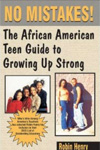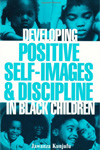Compact Unit

YOUTH DAY (YOUTH AND HEALTH)
Sunday, November 11, 2012
Guest Writer for This Unit: John R. Faison Sr. is Senior Pastor, Watson Grove Missionary Baptist Church, Nashville, TN.
The unit you are viewing, Youth Day, is a compact unit. This means that it is not a complete commentary of the Scripture(s) selected for this day on the calendar, nor does it have a full, supporting cultural resource unit and worship unit. Instead, to enliven the imagination of preachers and teachers, we have provided a sermonic outline, songs, suggested books, and suggested articles, links, and videos. For additional information see Youth Day in the archives of the Lectionary for 2008–2011. 2012 is the second year that the African American Lectionary has posted compact units for moments on its liturgical calendar.
I. Description of the Liturgical Moment
Melva Sampson wrote in the 2009 African American Lectionary commentary for Youth Day:
With this material as our backdrop, we provide a sermonic outline for Youth Day.
II. Youth Day (Youth and Health): Sermonic Outline
A. Sermonic Focus Text(s): Mark 5:21-24, 35-43 (New Revised Standard Version)
(v. 21) When Jesus had crossed again in the boat to the other side, a great crowd gathered around him; and he was by the sea. (v. 22) Then one of the leaders of the synagogue named Jairus came and, when he saw him, fell at his feet (v. 23) and begged him repeatedly, “My little daughter is at the point of death. Come and lay your hands on her, so that she may be made well, and live.” (v. 24) So he went with him. And a large crowd followed him and pressed in on him.
(v. 35) While he was still speaking, some people came from the leader’s house to say, “Your daughter is dead. Why trouble the teacher any further?” (v. 36) But overhearing what they said, Jesus said to the leader of the synagogue, “Do not fear, only believe.” (v. 37) He allowed no one to follow him except Peter, James, and John, the brother of James. (v. 38) When they came to the house of the leader of the synagogue, he saw a commotion, people weeping and wailing loudly. (v. 39) When he had entered, he said to them, “Why do you make a commotion and weep? The child is not dead but sleeping.” (v. 40) And they laughed at him. Then he put them all outside, and took the child’s father and mother and those who were with him, and went in where the child was. (v. 41) He took her by the hand and said to her, “Talitha cum,” which means, “Little girl, get up!” (v. 42) And immediately the girl got up and began to walk about (she was twelve years of age). At this they were overcome with amazement. (v. 43) He strictly ordered them that no one should know this, and told them to give her something to eat.
B. Possible Titlesii. It’s Not Too Late
iii. Do You Care Enough to Change?C. Point of Exegetical Inquiry
In any text there can be several words or phrases that require significant exegetical inquiry. One exegetical inquiry raised by this text is the fact that Jairus is a ruler of the synagogue. Since this day on the calendar concerns youth and health, one should examine the possible correlation between Jairus’s daughter’s health and her father’s vocation. Is it possible that the little girl became sick because her father was not available to provide the guidance that would have given the girl good health? Or perhaps the little girl learned habits that made her sick by watching her father disregard his own health? This is not uncommon for clergy. We do not know why the little girl was sick. However, we do know that the unhealthy decisions of our children are typically a result of the unhealthy decisions we make as parents. If we can impact the health of our children in positive ways we must do so and do it on a consistent basis.
III. Introduction
Youth is a precious commodity. Those who have moved beyond their childhood vigor and vitality into the anxiety-filled world of adult maturity usually offer the synchronized testimony that life was much easier “back then.” In fact, even if their childhood was tumultuous and trying, many still look upon those years with a smile because of the energy, freedom, and innocence that characterized them. There were always challenges, but they were minimal. Most people can remember being young and without a care, playing outside until the streetlights came on. They remember running through the neighborhood acting up, and just having a good time. They recall having a fight in the morning with a friend, then sharing a meal with them in the evening. Youth is designed by God to be enjoyed and embraced.
However, a new and dangerous version of childhood has crept into our way of life. While young people have more opportunities than previous generations, they are also facing more obstacles. The rise of technology has made us a convenience-driven, lazy society. The destruction of the neighborhood village and the impact of poverty have affected every facet of the family, including our diets and medical options. The increase in violence has taken away the freedom and purity of play. Consequently, childhood challenges have changed. Because of these shifts, more and more African American children are dying too soon. And for many who survive their negative environments, their quality of life is unquestionably impacted. Children are wrestling with hypertension, diabetes, and obesity, in addition to a lack of resources to address these needs and adults who will not provide the guidance to keep children healthy. The combination is yielding crippling results for black children.
Yet, in the midst of a dismal scenario, hope springs again from the Holy Writ. For God always has a word for the calamities faced by the people of God. The voice of Jesus in this text supplies answers if we apply his powerful words to our current cultural context.
IV. Moves/Points
Move/Point One – To make an unhealthy child healthy, do something different.
As a leader in the synagogue, Jairus is a respected man in the local community. His contemporaries, and perhaps Jairus himself, probably did not think very highly of Jesus. However, in the crucible of his own crisis, Jairus realizes he has to connect to the One who has proven ability to handle what Jairus cannot.
a. Go get help (Jairus finds Jesus);
b. Submit to the help (Jairus falls at Jesus’ feet); and
c. Bring the help inside your home (Jairus opens his home to Jesus).
Move/Point Two – Deal with doubters.
Jairus believes that his daughter can be healed. But he is forced to face the facts being reported by eyewitnesses from his home.
a. Recognize who really wants to help (people from Jairus’s own home tell him to give up on his daughter);
b. Remove those who do not believe (Jesus excuses those who do not believe); and
c. Replace them with those who have witnessed healing and health (Jesus brings in Peter, James, and John).
Move/Point Three – Develop some disciplines.
a. Change your attitude (Jesus took her by the hand and they worked together);
b. Change your activity (“Little girl, get up!”); and
c. Change your appetite (give her something to eat).
V. Celebration
One of the greatest things about Jesus’ life is that we not only hear his powerful words, though they are strong enough alone to change the world, but we discover that he also lives out these powerful words in ways that provide an exemplary pattern for us. He is not just our Savior eschatologically; he is our Standard existentially. Now as a result of his life, we can have life, and have it more abundantly. Jesus has taught us that even a child thought dead can be revived once Jesus gets involved!
The health of our children will be changed because we will do something different with Jesus as our example. The Savior will steer us toward healthy lifestyles for us and our children. Whatever it is that threatens the health of our children we will not help it thrive. Our children are not dead regardless of what the world says; they are alive and their health shall be restored and strengthened. We thank God in advance for the victory that shall be ours.
VI. Illustration
Listening to the Spirit
In 2007, Chevrolet released a new model of the Tahoe SUV. New features made it completely different from the previous two designs. One feature was a beeping mechanism. SUVs are large, so it is difficult to see behind you as you drive in reverse. The new Tahoe would beep when you started backing up. They also placed sensors in the rear bumper that would pick up the proximity of your vehicle to obstacles behind you. The closer you were to hitting something, the louder and more frequent the beeps became.
I have learned that the Holy Spirit speaks to us the same way. When it comes to the health of our children, we have all heard the beeps: “Don’t buy them that sugary cereal and tell yourself you did it because don’t have time to cook them breakfast.” BEEP! “When was the last time you made them exercise?” BEEP! “You know good and well that you don’t belong in fast food restaurants.” BEEP! But when we hear the BEEPs, we often ignore them. And soon, we hear the inevitable sound that occurs when we go too far. Boom!! We hit something. Now our children have dented fenders (obesity), scratched paint (diabetes), and broken taillights (high cholesterol). When our children get sick, we ask, “Lord, why my child?” God responds, “I was beeping and beeping but you didn’t listen. I kept warning you. Now, a price has to be paid.”
| —John R. Faison, Sr. |
See the Sermon Illustrations section of the African American Lectionary for additional illustrations that you may wish to use in presenting a sermon for this moment on the liturgical calendar.
VII. Sounds, Sights, and Colors in These Passages
Mark 5:21-24| Sounds: | Waves crashing; boat handlers working; voices of the crowd; Jairus begging; |
| Sights: | Jesus being pressed by the crowd; Jairus at Jesus’ feet; desperation on Jairus’s face; and |
| Colors: | blue/green sea; brown sand on the shore; various colors of the crowd’s attire. |
Mark 5:35-43
| Sounds: | Mourners weeping and laughing; the silence of the little girl’s room; Jesus’ command; |
| Sights: | Pain in the eyes of the little girl’s mother; Peter, James, and John standing with Jesus; and |
| Colors: | Paleness of the little girl’s face; and the brightness of her eyes when she is healed. |
VIII. Songs to Accompany This Sermon
A. Well-known Song(s)
- I Pray. By J. Greene and K. Pridgen
- All You Are. By A. Salas, J. Vidal, K. Small, and Mia Fields
- Still Here. By Paul D. Allen, Walter Kearney, Evin Martin, and James L. Moss
B. Modern Song(s)
- I Don’t Look Like. By Thurman Lee
- No Worries. By Gabriel Azucena, William Barefield, and Alex Medina
- Time to Believe. By DeWitt Jones III and Kim Jones
C. Spiritual(s)
- The Jesus in Me. Anonymous. Arr. by Cynthia Wilson
- We’re Growing. By Evelyn Reynolds. Arr. by Nolan Williams, Jr.
D. Liturgical Dance Music
- Go Get It. By Erica Campbell, Tina Campbell, and Warryn Campbell
- Perfect Praise. By Brenda Moore
E. Songs for the Period of Prayer
- Rescue Me. By David Caton, Cherub Roth, and Cherub Ruth
- Please Be Patient with Me (God Is Not Through with Me Yet). By Curtis Burrell
F. Sermonic Selection(s)
- Find a Reason. By Warryn Campbell, Jason Champion, Eric Dawkins, and Tony Dixon
- Healed. By Jonathan Nelson and Donald Lawrence
G. Benediction Song(s)
- Healing. By Richard Smallwood
- Expect the Great. By Darien Dennis, Kenneth Shelton, and Jonathan Nelson
IX. Videos, Audio, and/or Interactive Media
- Stop Childhood Obesity: Junk Food. Strong 4 Life.com. Online location: http://www.youtube.com/watch?v=CUuu5CODEmg&feature=related accessed 23 February 2012.
- Stop Childhood Obesity: Video Games. Strong 4 Life.com. Online location: http://www.youtube.com/watch?v=2oBeuSCfGeg&feature=relmfu accessed 30 April 2012.
- “African American Adolescents and Obesity,” with Dr. K. Sanford. Online location:
Part one:
http://www.youtube.com/watch?v=kybzatNTzxo accessed 30 April 2012.
Part three:
http://www.youtube.com/watch?v=1NEgm1We4kw accessed 30 April 2012.
- Kid Fabulous, a program aimed at reducing childhood obesity and improving all-around health in St. Petersburg’s African American community. Online location: http://www.youtube.com/watch?v=x_WxxwGRZAU accessed 30 April 2012.
X. Books to Assist in Preparing Sermons, Bible Studies, and/or Worship Services Related to Youth Day (Youth and Health)
 |
Henry, Robin. No Mistakes! The African American Teen Guide to Growing Up Strong. Phoenix, AZ: Amber Books, 2005. |
 |
Kunjufu, Jawanza. Developing Positive Self-Images & Discipline in Black Children. Sauk Village, IL: African American Images, 1984. |
 |
Covington Armstrong, Stephanie. Not All Black Girls Know How to Eat: A Story of Bulimia. Chicago, IL: Lawrence Hill Books, 2009. |
XI. Links to Helpful Websites
- Black Girls Rock! Online location: http://blackgirlsrockinc.com/live/about/what-we-do accessed 30 April 2012.
- The Black Youth Project. Online location: http://www.blackyouthproject.com/about/ accessed 30 April 2012.
- University of Michigan Center for the Study of Black Youth in Context (CSBYC). Online location: http://csbyc.soe.umich.edu/ accessed 30 April 2012.
- “Black Child Health Fact Sheet.” The Black Health Zone. Online location:
http://www.blackhealthzone.com/black-child-fact-sheet accessed 23 February 2012.
- The National Black Child Development Institute. Online location: http://nbcdi.org accessed 23 February 2012.
- “Good Health for African American Kids with Barbara Dixon.” MedicineNet.com. Online location: http://www.medicinenet.com/script/main/art.asp?articlekey=54334 accessed 23 February 2012.
XII. Notes for Select Songs
A. Well-known Song(s)
- I Pray. By J. Greene and K. Pridgen
Location:
Greene, Jessica. 4 The World. Baltimore, MD: Habakkuk Music, 2007.
- All You Are. By A. Salas, J. Vidal, K. Small, and Mia Fields
Location:
Rhema Soul. Worn Soles. Ft. Lauderdale, FL: Rhema Soul, 2007.
- Still Here. By Paul D. Allen, Walter Kearney, Evin Martin, and James L. Moss
Location:
21:03. Evolved…From Boys to Men. New York, NY: Verity, 2011.
B. Modern Song(s)
- I Don’t Look Like. By Thurman Lee
Location:
Ballance, CJ. If God Said It. Roanoke Rapids, NC: Gospel Visions Entertainment, 2010.
- No Worries. By Gabriel Azucena, William Barefield, and Alex Medina
Location:
Lee, Trip. Between Two Worlds. Atlanta, GA: Reach Records, 2010.
- Time to Believe. By DeWitt Jones III and Kim Jones
Location:
Forever Jones. Get Ready. Brentwood, TN: EMI Gospel, 2010.
C. Spiritual(s)
- The Jesus in Me. Anonymous. Arr. by Cynthia Wilson
Location:
Zion Still Sings for Every Generation. Nashville, TN: Abingdon Press, 2007. #132
- We’re Growing. By Evelyn Reynolds. Arr. by Nolan Williams, Jr.
Location:
African American Heritage Hymnal. Chicago, IL: GIA Publications, 2001. #618
D. Liturgical Dance Music
- Go Get It. By Erica Campbell, Tina Campbell, and Warryn Campbell
Location:
Mary Mary. Go Get It. New York, NY: Columbia, 2012.
- Perfect Praise. By Brenda Moore
Location:
Whitman, Walt & The Soul Children of Chicago. Gospel Greatest Hits, Vol. 3. New York, NY: A&M, 1997.
E. Songs for the Period of Prayer
- Rescue Me. By David Caton, Cherub Roth, and Cherub Ruth
Location:
Coko. The Winner in Me. Nashville, TN: Light Records, 2009.
- Please Be Patient with Me (God Is Not Through with Me Yet). By Curtis Burrell
Location:
Cleveland, James. Savoy Gospel Classics. Jackson, MS: Savoy, 2001.
F. Sermonic Selection(s)
- Find a Reason. By Warryn Campbell, Jason Champion, Eric Dawkins, and Tony Dixon
Location:
Champion, Jason. Reflections. Brentwood, TN: EMI Christian Music Group, 2008.
- Healed. By Jonathan Nelson and Donald Lawrence
Location:
Nelson, Jonathan. Right Now Praise. Mobile, AL: Integrity Media, 2008.
G. Benediction Song(s)
- Healing. By Richard Smallwood
Location:
Healing: Live in Detroit. New York, NY: Verity, 1999.
- Expect the Great. By Darien Dennis, Kenneth Shelton, and Jonathan Nelson
Location:
Nelson, Jonathan. Better Days. New York, NY: Integrity, 2010.



